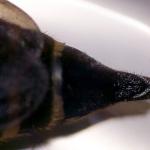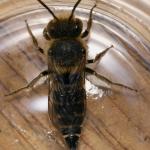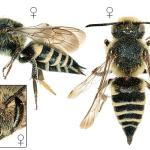Coelioxys apiculata NYLANDER 1848; Coelioxys diglypha FÖRSTER 1853; Coelioxys hebescens NYLANDER 1848; Coelioxys trinacria FÖRSTER 1853; Coelioxys umbrina SMITH 1843; Coelioxys carinata SCHENCK 1855; Coelioxys longiuscula SCHENCK 1855; Coelioxys obtusata SCHENCK 1855; Coelioxys parvula SCHENCK 1855; Coelioxys fallax MOCSARY 1881
There are currently no published keys to Coelioxys. George Else has a key in preparation. A photographic guide to the genus is available for download from the BWARS website. Distribution
Recorded from England and Wales, but most frequent in the south and south-east. Not known from Scotland or Ireland. It occurs in the Channel Islands.
It occurs in much of western Europe, but is apparently absent from Greece and the
Balkans and also from Norway and Sweden.
This species is not regarded as nationally scarce or threatened. It is regarded as regionally notable for northern England.
Found in a range of habitats as it can utilise multiple hosts.
It is on the wing from June to August with the main activity in late June and July.
It is a cleptoparasite of Megachile willughbiella (Kirby), M. circumcincta (Kirby) and Anthophora furcata (Panzer). It may also parasitise M. centuncularis (Linnaeus) and A. bimaculata (Panzer). The females of all but one British species of Coelioxys have a pointed sixth tergite and fifth sternite which are apparently used to cut open the cell wall or cap of the host species. An egg is laid in this slit with either at least one third protruding through into the cell or laid directly onto the host egg. There is currently no work to suggest which method C. rufescens employs. In general, Coelioxys larvae kill, and in some species eat, the host egg immediately after hatching. Pupation occurs within a cocoon spun within the host cell where the larva overwinters as a pre-pupa, prior to final pupation, presumably in spring of the following year.
No data available.
No data available.
2012




